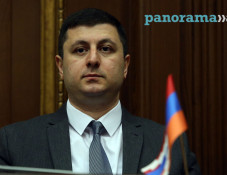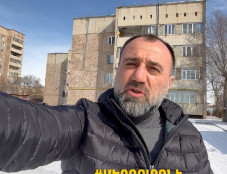
Six years have passed since April war in Artsakh
Six years have passed since the 2016 war in Artsakh (Nagorno-Karabakh). Azerbaijan launched a large-scale offensive along the entire Artsakh-Azerbaijan contact line in the wee hours of April 2, using almost all types of military equipment in its arsenal.
The clashes, traditionally dubbed the Four-Day War or the April War, continued until April 5, with the fiercest battles occurring in the south (Hadrut) and south-east (Martakert) sections of the contact line. The adversary used heavy artillery, armored equipment and combat aviation to infiltrate deep into the defensive lines of the Artsakh Defense Army and occupy tactical positions.
The Azerbaijani army carried out artillery attacks on the peaceful settlements of Artsakh and permanent posts of several military units.
Child killed
On April 2, the Azerbaijani armed forces fired MM-21 (Grad) multiple rocket launcher in the direction of Zoravan, Martuni, due to which 12-year-old Vagharshak Grigoryan was killed and 11-year-old Gevorg Grigoryan and 12-year-old Vardan Andreasyan were wounded.
Other civilian casualties were also registered alongside the combat losses that the Karabakh army sustained in the April war.
Soldiers beheaded
Kyaram Sloyan, an Artsakh Defense Army soldier, was killed during the clashes. After his death he was beheaded, with videos and pictures showing Azerbiajani soldiers posing with his severed head posted on social networks.
Besides Sloyan, at least two more Karabakh soldiers - Hrant Gharibyan and Hayk Toroyan - were beheaded. In late June 2016, Karabakh’s Prosecutor’s Office declared that one of the Armenian soldiers killed by Azerbaijani troops during the 4-day war was decapitated while still alive.
Bodies tortured
On April 10, 2016, in accordance with the arrangement reached earlier, the State Commission on Prisoners of War, Hostages and Missing Persons of the Artsakh Republic, through the mediation of the International Committee of the Red Cross (ICRC) and the Office of the Personal Representative of the OSCE Chairman in Office, carried out the exchange of bodies of the deceased between the Nagorno Karabakh Republic and Azerbaijan near the Bash Karvend settlement. The bodies of 18 servicemen of the NKR Defense Army, fallen as a result of the large scale military aggression unleashed by Azerbaijan in April 2-5, were transferred to the NKR side during the exchange.
At the presence of the representatives of the International Committee of the Red Cross, the NKR State Commission on Prisoners of War, Hostages and Missing Persons registered that all bodies of the deceased transferred by the Azerbaijani side had signs of torture and mutilation.
“Those acts, being a flagrant manifestation of inhumanity, run counter to the laws and customs of war and are in grave violation of the international humanitarian law, in particular, the Convention (I) for the Amelioration of the Condition of the Wounded and Sick in Armed Forces in the Field (1949), Geneva Convention (III) relative to the Treatment of Prisoners of War (1949) and the Additional Protocol to the Geneva Conventions of 12 August 1949 relating to the Protection of Victims of International Armed Conflicts (Protocol I),” the Commission said in a statement.
“Karabakh will seek to ensure that Azerbaijan’s behavior is condemned in strongest terms by the international community and relevant agencies, and those responsible are brought into account.”
No traces of abuse were found on bodies of Azeri soldiers returned by Karabakh.
The Armenian armed forces lost 110 soldiers in the April fighting, with 121 servicemen and volunteers sustaining different degrees of bodily injuries.
No specific data are available on the Azerbaijani army's losses. The Ministry of Defense reported only 31 soldiers' death, but different sources claim they lost around 300 servicemen.
.jpg)
(1).jpg)
.jpg)
(1).jpg)
(1)(1).jpg)
(1)(1)(1).jpg)
Newsfeed
Videos






























